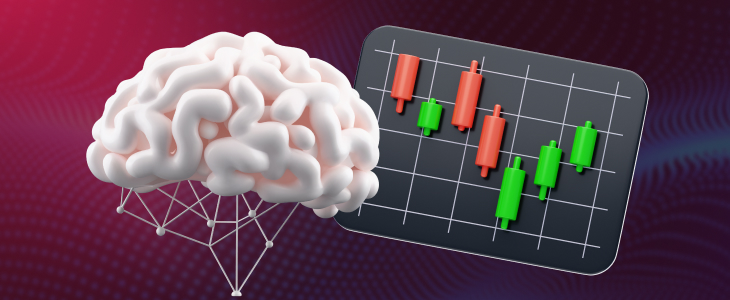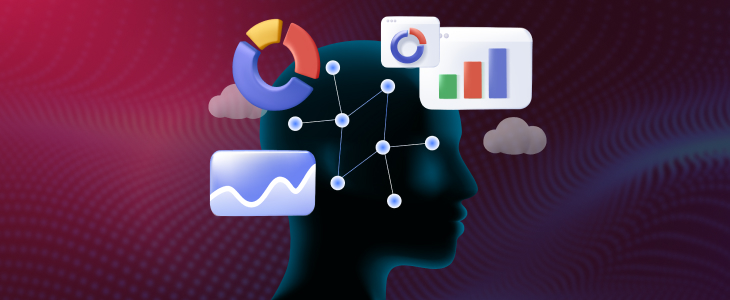foreign exchange market(forex) is the most volatile financial market, which trades money every second. Many traders use online and CFD trading to trade on platforms like MT4는. These platforms keep the traders informed by providing them with suitable tools.
New technologies, such as Large Language Models (LLMs), are now transforming how traders interpret information, news, and market trends. These LLMs can scan financial reports in a snap, decipher global news, and convert them into trading suggestions.
In this article, we will find out how LLMs changed the forex trading game and what challenges they pose.
What Are LLMs and Why Do They Matter in Forex?
Advanced computer programs known as large language models (LLMs) can read, understand, and generate human-like language. In the context of forex trading, this implies the ability to learn from financial news, gauge the market’s mood, and even predict prices before human counterparts are aware of them.
Traders can utilize this knowledge to maximize their strategy and reduce risk. Solutions like FXCess blend the capabilities of legacy trading software with AI-based intelligence, allowing retail traders to participate in the high-speed forex game.
The Arms Race: Quant Firms vs. Retail Traders
Meanwhile, quantitative firms—major financial institutions—remain ahead of the game as they use advanced technology to gain an advantage, while retail traders strive to follow in their footsteps. Consequently, the competition looks like this:
- Data Access: Large institutions enjoy access to vast amounts of private information, while retail traders deal with mostly public information. It means that professionals start with a more substantial set of information, yet innovative platforms like FXCess are helping to close the gap.
- Speed of Execution: Quant firms use high-speed systems that execute trades in microseconds. Retail traders may not be able to match the speed, but user-friendly platforms still enable them to enjoy speedy and reliable execution.
- Sophistication of Strategy: Institutions formulate sophisticated strategies, while retail traders use fundamental indicators. AI solutions can offer sophisticated strategies to retail traders.
- Risk Management: Sophisticated hedging strategies are adopted by large institutions, but retail traders use stop-loss and margin limits. AI can help both segments to make safer choices.
- Cost Effectiveness: Institutions can lose capital and remain in operation, but retail traders need to be even more vigilant. Platforms like FXcess have cost controls in place that help keep trading costs low.

What are the Primary Requirements of Training LLMs for Forex Trading?
Forex foreign exchange LLMs are challenging to train. For these models to succeed in volatile markets, specific rules must be adhered to. These include:
- Domain Adaptation: LLM needs to acquire forex vocabulary, starting from USD/INR notation and progressing to technical terms such as pips, spreads, and hedging. The model training in this field enables it to label conversations in the market accurately and also avoid incorrect market estimations.
- Real-Time Processing: The exchange rates change in real time, and as such, any delay of a second will result in missed opportunities. An LLM would need to make suggestions in real time upon which the trader could immediately take action.
- Risk Controls: AI sometimes gives risky or very conservative predictions. In-built risk control tools, like warnings and safe-trading limits, prevent traders from following untrusted signals. This makes LLM trading secure for retail traders.
What are the Applications of LLMs in Forex Quant Trading?
LLMs can assist Forex traders in various ways, and some of these include:
- Sentiment Analysis: LLMs can scan the news headlines, reports, and even the social media status to discern the mood of the investors for the market. If it is upbeat, prices rise, and if it is down, prices fall. It benefits traders in anticipating mood changes before they happen on charts.
- Pattern Recognition: One of the things that computers can do is to discover hidden patterns in charts that are not even visible to the naked eye. These patterns usually offer early indications of substantial movements, therefore, providing traders a head start in executing their trade plans.
- Predictive Forecasting: LLMs are capable of foreseeing the price trend in the near future with a certain degree of confidence. The prediction is never perfect all the time; however, even a small margin of error can make a significant impact for traders.
- Trade Optimization: AI will provide recommendations on how to go in and out of trades in a manner to optimize the result. For instance, it could involve closing out a trade prematurely as an attempt to take profit or postpone taking additional profit. It will assist traders in making wiser decisions without assumptions.
What are the Challenges in Training LLMs for Forex?
While LLMs are mighty, their usage in the forex market is still affected by several challenges. They are:
- Data Bias: LLMs with excessive reliance on past data for training can be found wanting in a new or different scenario. So, their prediction of accuracy will tend to fall way low in that particular scenario.
- Black-Box Models: LLMs are more likely to respond without giving away the in-between steps utilized to come up with the responses.
- Regulatory Issues: AI finance must be tightly regulated to prevent abuse and exploitation. Platforms and traders must have safeguards in place to ensure compliance with local regulations.

Conclusion
LLMs are ushering in new eras in forex trading, and it’s an “arms race” between retail traders and the institutions. Retail traders can also gain from using AI, but they must have proper infrastructure in place.
FXcess is one of those platforms that provides you with the luxury to trade on MetaTrader 4 at high-speed execution, and also has the advantage of AI-based analysis, which would be a dream of every trader, whether novice or seasoned. Those who can effectively blend traditional methods with the power of artificial intelligence will be the ones who shape the future of forex trading.
FAQs
1. Is it possible for retail traders to use LLMs to trade forex?
Yes. Sites like FXcess are providing AI software to ordinary traders.
2. How does CFD trading connect with LLMs?
CFD enable traders to act on AI-driven predictions without owning the actual currency, providing flexibility and leverage.
3. Are LLMs always precise in forex prediction?
Not really. They provide good inputs, but always need to be mixed with risk management.
Disclaimer:
This information is not considered as investment advice or an investment recommendation, but instead a marketing communication. FXCess is not responsible for any data or information provided by third parties referenced, or hyperlinked, in this communication.
